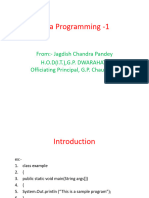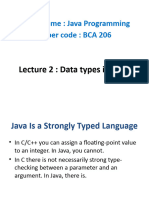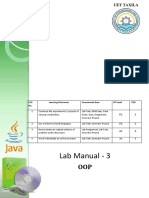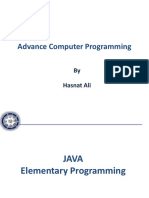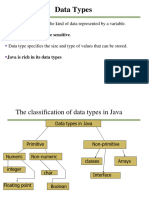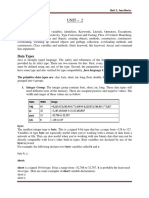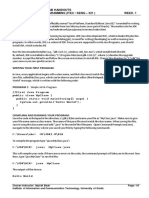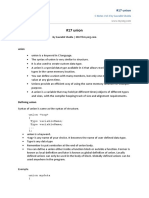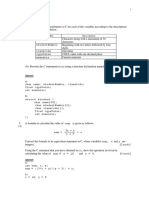0% found this document useful (0 votes)
52 views19 pagesTutorial 01
This document summarizes an introduction to Java tutorial. It outlines topics to be covered including Java basics like data types, operators, control structures and problem set practice. It also discusses administrative details like problem set guidelines, office hours and laptop issues. The tutorial will provide a quick review of the previous week's topics, group exercises and problem set review.
Uploaded by
Wilver IcbanCopyright
© Attribution Non-Commercial (BY-NC)
We take content rights seriously. If you suspect this is your content, claim it here.
Available Formats
Download as PDF, TXT or read online on Scribd
0% found this document useful (0 votes)
52 views19 pagesTutorial 01
This document summarizes an introduction to Java tutorial. It outlines topics to be covered including Java basics like data types, operators, control structures and problem set practice. It also discusses administrative details like problem set guidelines, office hours and laptop issues. The tutorial will provide a quick review of the previous week's topics, group exercises and problem set review.
Uploaded by
Wilver IcbanCopyright
© Attribution Non-Commercial (BY-NC)
We take content rights seriously. If you suspect this is your content, claim it here.
Available Formats
Download as PDF, TXT or read online on Scribd
/ 19
